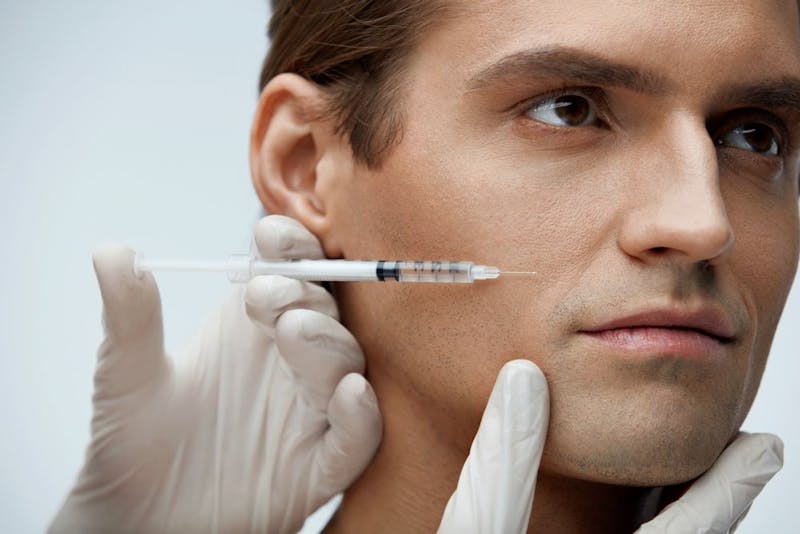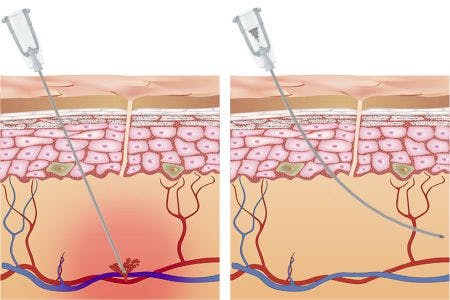
So if you have to use a needle anyway, why do some injectors favor a micro-cannula?
When using a needle, the injector has to insert and remove the needle multiple times to deliver the product to any given area. Micro-cannulas are also longer than needles and can reach more areas with fewer entry points into the skin.
With a micro-cannula, one needle stick allows the entry of the micro-cannula which can then deliver the cosmetic product in a fan-like or matrix pattern because of its flexibility. Less needle sticks means less discomfort for the patient too.
A clinical study by plastic surgeon Sam Sukkar, M.D. of 11 patients found pain scales scored at the point of injection were slightly less with the cannula, and swelling was significantly reduced compared to the use of a sharp needle.
Another advantage for a micro-cannula versus a needle? Less bruising. Underneath the surface of our skin, the face is alive and bursting with branches and branches of vessels. Underneath lies veins, arteries, capillaries and nerves. Sharp tip needles can easily pass into a vein or artery. This can cause significant bruising and swelling, and worse, injection of the filler into the artery or vein, which can cause serious complications. The blunt tip of a micro-cannula tends to push veins or arteries aside as it passes through the tissues. The injector is also able to feel the resistance from structures that the cannula passes through which allows them to gauge the amount of pressure to apply and manipulate the cannula around the vessels.

In summary, the advantages of using a micro-cannula versus a needle are:
-
-
More rapid recovery than sharp-tipped needles.
-
Less bruising and swelling.
-
Less pain for the patient.
-
Fewer needle sticks or entry points.
-
More control for the injector.
-
As mentioned, the choice of needle versus micro-cannula is really up to your injector. Cosmetic aesthetic injections are a medical procedure, so your injector will know your anatomy, the instances where a micro-cannula would be more appropriate than a needle, the depth of placement of injectable products; the science behind the filler and of course, the management of complications should they ever occur.

